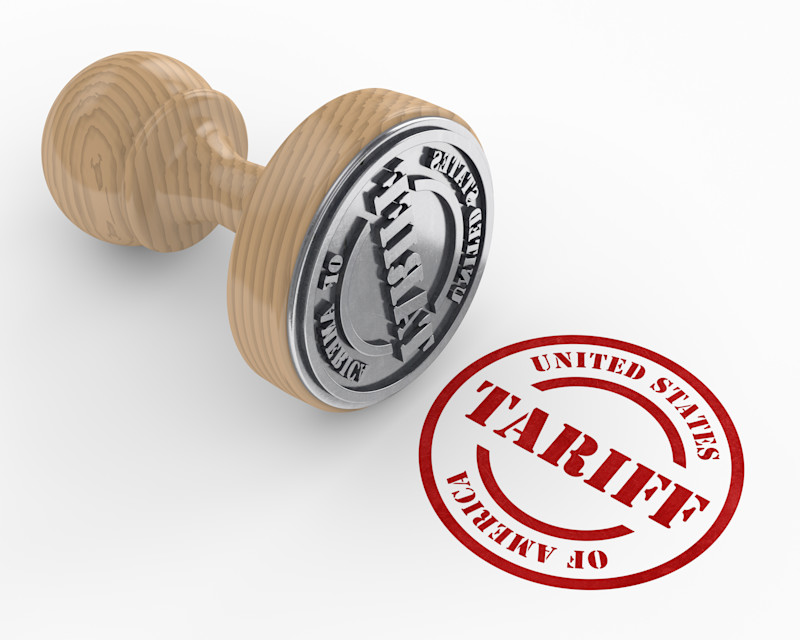During the 2024 presidential campaign, President-elect Donald Trump emphasized tariffs as a way to safeguard American jobs, combat foreign competition, and boost U.S. manufacturing. While it remains unclear how his administration will implement tariff policies, the debate about their role in global trade continues to stir controversy.
With so much attention returning to the topic, we explore what tariffs do, perspectives from economists, some pros and cons, and AMT – The Association For Manufacturing Technology’s stance on how best to use them.
Economic Skepticism and Short-Term Benefits
Tariffs are taxes on imported goods, often used by governments to protect domestic industries, address trade imbalances, or respond to unfair trade practices.
Economists are typically skeptical of tariffs, seeing them as tools that can offer short-term protection but often lead to longer-term economic inefficiencies. While tariffs can help shield certain industries from foreign competition, they tend to increase costs for consumers and disrupt the global flow of goods. In the long run, tariffs can undermine the industries they aim to protect by raising production costs and stifling innovation.
One key concern is the risk of retaliation. When a country imposes tariffs, others often respond with their own, creating a cycle of escalating trade barriers. This was seen in the ongoing U.S.-China trade dispute, which resulted in higher prices and market uncertainty, harming both American consumers and global trade. A 2019 study by the Federal Reserve Board found that the tariffs imposed on China in 2018 caused reductions in manufacturing employment and increases in producer prices. For manufacturing employment, a small boost from the import protection afforded by tariffs was more than offset by rising production costs and retaliatory tariffs.
Tariffs as a Bargaining Chip
Governments sometimes use tariffs strategically as leverage in international negotiations. Trump, for example, has suggested imposing tariffs on imports from Mexico unless the Mexican government takes more decisive action to control migration across the U.S. southern border. However, many industries today depend on complex global supply chains, where components are sourced from multiple countries. Tariffs can disrupt these supply chains, increasing production costs and delaying deliveries, hurting both businesses and consumers.
Protecting Domestic Industries and Generating Revenue
One argument in favor of tariffs is their potential to protect domestic industries, particularly those that are emerging or struggling to compete against foreign imports. By raising the price of imported goods, tariffs can make domestic products more competitive, helping to preserve jobs and even create new ones in sectors like manufacturing. However, these protections often come at a cost. Industries that rely on imported components face higher production costs, eroding their competitiveness and leading to job losses in other sectors.
Additionally, tariffs can be a significant source of government revenue. This income can be used to fund public services, infrastructure projects, or even tax cuts, as Trump has proposed to extend the 2017 tax cuts. However, the revenue generated by tariffs is often offset by higher prices for consumers. As businesses pass on the increased cost of imported goods, consumers face higher prices for essential items like food, electronics, and clothing. This reduction in purchasing power can contribute to inflation, harming the economy in the process.
National Security and Strategic Use of Tariffs
In some cases, tariffs are justified on national security grounds. For instance, governments impose tariffs to protect industries critical to defense, such as advanced manufacturing and technology. They can also counteract unfair trade practices, such as dumping, where foreign countries sell goods at prices below market value to gain a competitive edge. In these cases, tariffs are tools to ensure fairness and protect vital national interests.
As an alternative, non-tariff barriers – such as quotas or voluntary export restraints – can address trade imbalances. For example, in 1986, President Ronald Reagan’s administration, responding to a petition filed by AMT (then NMTBA), negotiated voluntary restraint agreements with Japan and Taiwan on machine tool imports, citing national security risks. These types of agreements are less disruptive than tariffs but still achieve similar goals.
Balancing Protection and Free Trade
In general, tariffs tend to have a negative economic impact by distorting markets and reducing global trade. While they may serve a strategic purpose, such as protecting vital industries or countering unfair trade practices, as well as provide short-term relief from foreign competition, they often result in lower productivity, price increases, and retaliatory action. Conversely, economists widely agree that free trade with minimal interference from tariffs drives economic growth and improves welfare by allowing countries to specialize in their strengths while offering consumers lower prices and greater choice.
AMT’s Final Thoughts
AMT believes targeted tariffs should be used cautiously and sparingly – primarily as a last resort to address a specific short-term goal or challenge. Rather than relying on unilateral tariff measures, the emphasis should be on pursuing multilateral trade agreements that open markets and reduce barriers, fostering a global trading environment that benefits all parties involved. As the global economy becomes increasingly interconnected, the challenge will be finding a balance between protecting national interests and promoting free trade, ensuring that the benefits of globalization are widely shared without harming long-term economic growth.






